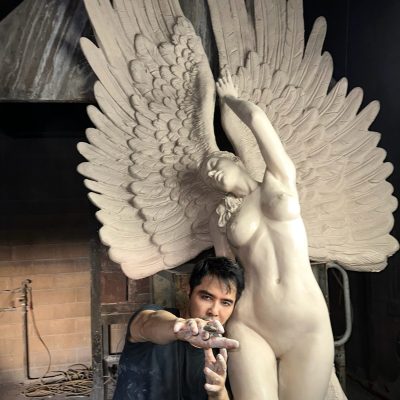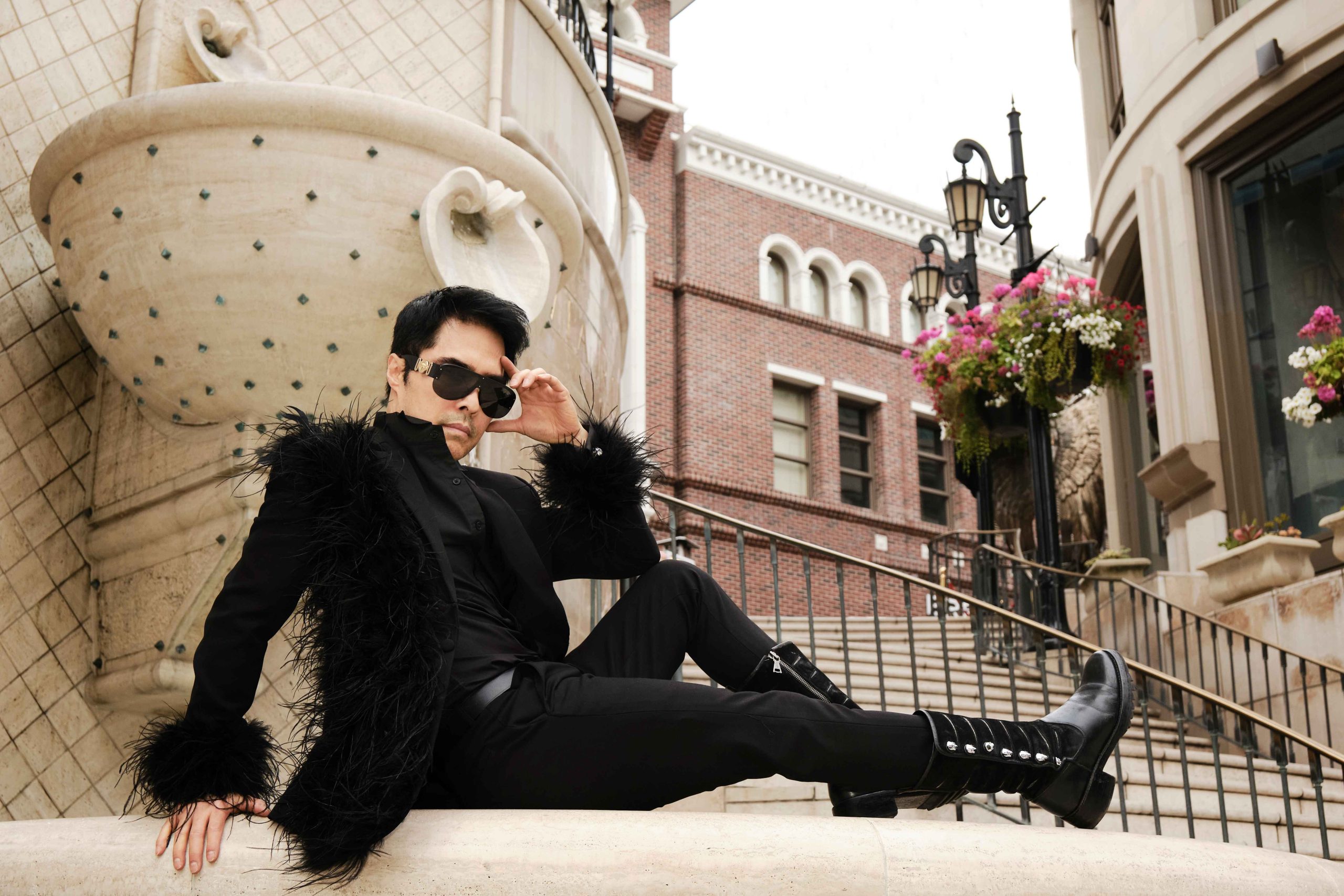In the intricate world of experimental cinema, few films are as ambitious and thought-provoking as Ectropy: From Chaos to Order, the latest offering by Jordan Schulz and Andrew Creme. Set to premiere in the fall of 2024 under the creative direction of internationally renowned artist Sir Daniel Winn, Ectropy is more than just a sci-fi short film; it is a metaphysical journey that explores the genesis of the universe, the nature of creativity, and the delicate balance between chaos and order. This film promises to be a milestone in contemporary cinema, pushing the boundaries of what visual storytelling can achieve.


Directed by Jordan Schulz, with executive producers Randall J. Slavin and the Vungo family, Ectropy features a screenplay by Schulz and Creme and introduces actress Vivienne Lucille. The film’s silent cinematography emphasizes the power of visual storytelling, allowing the imagery and themes to unfold without the constraints of dialogue. This artistic choice enables Ectropy to speak to the core of human experience, transcending cultural and linguistic boundaries. Sir Daniel Winn, whose artistic vision shapes the film’s narrative, also stars as the Artist, guiding the audience through an introspective journey that delves into the mysteries of cosmic creation and the search for meaning in an ever-evolving universe.
Sir Daniel shares, “It was fairly natural for me to portray the Artist. The premise of the film illustrates the journey from chaos to order. My life has been a reflection of this process starting from a young age when I faced abandonment, homelessness, and life in an orphanage. After my father returned from the war, fleeing war-torn Vietnam, our struggles continued as we tried to survive in the U.S. As an adult, I lived on the streets for several years, fighting to survive. This was my chaos. I believe that chaos was necessary for me to find order. This transformation is the essence of Ectropy. In the film, the Artist’s journey mirrors my own, depicting the shift from a lonely and chaotic past to an orderly present, with the process continuing to evolve beyond this life.”
At the heart of Ectropy lies a concept that challenges our understanding of order and chaos. While many are familiar with entropy—the gradual decline into disorder—Ectropy introduces us to its conceptual opposite: the force that drives the universe toward greater complexity and harmony. In this film, Ectropy is not just a scientific principle but a narrative force that guides the Artist as he works to bring structure and beauty out of the primordial chaos. Through this lens, the film explores the delicate balance that exists within creation itself, where every act of bringing something new into existence is both a struggle against entropy and a celebration of life’s inherent order. Sir Daniel posits that,
“Chaos and order are opposite extremes, just like life and death. It’s not necessarily considered good or bad—it just is. Without the bitter, there is no sweet. Without death, there’s no life. Without chaos, order could seem meaningless. The Big Bang is an example of chaos. Without that initial chaos, the billions of galaxies—and within each galaxy, the billions of stars—could never have formed into the order that we see today, which makes our existence possible. In essence, without one, there would be no other. We need to embrace that to understand our existence and our place in the universe.”
The story of Ectropy unfolds during the pivotal days preceding the birth of humanity and the natural world. The protagonist, known simply as the Artist, is a member of the Timeless Presence, an enigmatic species with the unique ability to shape the universe. As the Artist embarks on his journey, the audience witnesses the monumental task of weaving the very fabric of nature, a process that is as much a creative endeavour as it is an existential struggle.
The Artist’s journey is marked by profound challenges and inner turmoil. Tasked with the colossal role of shaping the universe, the Artist faces internal battles that mirror the external forces he seeks to master. As he stands on the brink of despair, haunted by the relentless ticking of a clock—a symbolic reminder of time’s unyielding march—he struggles with the fear of failure and the pressure to fulfill his purpose. These challenges are not just obstacles but reflections of the broader human condition, representing the doubts and anxieties that can paralyze us all.
The narrative takes a profound turn when the Artist encounters the youthful embodiment of Mother Nature, referred to in the film as “Gaia Nebula.” This encounter is not merely a discovery but a revelation, one that transforms his understanding of his role in the universe. No longer just a solitary creator, the Artist finds himself drawn into a partnership with the very essence of life and nature. This relationship redefines his purpose, infusing his work with a new vitality and leading him to a destiny that merges his existence with the natural world. By the film’s end, the Artist has not only shaped nature but has become an inseparable part of it, embodying the idea that true creation is a process of integration, where the creator and the creation are one.
What sets Ectropy apart is its daring approach to silent storytelling. In an era where dialogue often drives narrative, Ectropy forgoes spoken words entirely, relying on powerful visuals and evocative soundscapes to tell its story. This lack of dialogue transcends language barriers, inviting a universal audience to engage with its themes on a purely emotional, spiritual, and intellectual level. Every frame, sound, and gesture contributes to the film’s overarching themes of creation and existential struggle. Sir Daniel highlights that,
“Art, like philosophy, is deeply subjective. The same goes for religion, spirituality, and all that humankind has sought to grasp in the pursuit of universal truth. I chose to create a film that merges cinematic art with fine art without dialogue because I wanted to communicate visual emotions that transcend language. With so many languages spoken in the world, I wanted to communicate in a way that could be universally conveyed—like using facial expressions to convey emotion and music to deepen the experience. This visual and emotional language communicates the essence of my philosophy. Regardless of one’s culture or language, I hope every viewer can connect with the message, apply it to their own life, and embrace their existence in order to understand their purpose in the universe and to live a more fulfilling life.”
Beyond its focus on creation, Ectropy is a profound exploration of the human condition. Through the Artist’s journey, the film delves into themes of ambition, passion, and sacrifice, inviting viewers to reflect on their own lives, confront inner demons, and discover their true calling—one that, like the Artist’s, may be intricately linked to the essence of existence itself.
This thematic depth is enriched by the film’s visual and symbolic elements. Sir Daniel Winn, a maestro of artistic expression, infuses the film with the rich philosophical underpinnings that characterize his work. Known for his exploration of duality and existentialism, Sir Daniel’s approach blends fine art, sculpture, and painting into a vivid dance of colour and emotion. In Ectropy, this artistic style is not just a backdrop but a fundamental part of the narrative, with each frame carefully crafted to evoke a visceral response from the audience.

As part of a grander vision, Ectropy is the first installment in an ambitious trilogy capturing the entirety of the cosmic cycle—from the birth of order, through creation, to the inevitable return to chaos. This trilogy, which also includes the acclaimed Creation and the upcoming Entropy, is a metaphysical exploration of existence itself. Each film represents a different stage of this cycle, with Ectropy symbolizing the birth of order from chaos, akin to the Big Bang Theory.
Creation, the second installment, was released in 2023. It celebrates the circle of life by depicting the emergence of humanity and the natural world. The film uses the analogy of the Artist to explore the idea that creation begins where destruction ends—a theme resonating deeply with Ectropy. Creation showcases the transformation of the Artist’s sculptures, Femme and Homme, into organic human bodies, symbolizing the birth of Adam and Eve and highlighting the interconnectedness of creation, destruction, and rebirth.
The final chapter, Entropy, set to be filmed in 2025, will portray the inevitable descent from order back into chaos. In this powerful conclusion, the world erupts in a violent explosion, obliterating everything and reverting back to disorder. This cycle of creation and destruction, mirrored in the cosmic forces that shape our universe, serves as a reminder of the transient nature of existence. The film’s exploration of entropy—the reverse of Ectropy—emphasizes the cyclical essence of life, where every ending is a new beginning.
The trilogy as a whole is a testament to Sir Daniel Winn’s vision as a cinematic artist. His work, deeply rooted in fine art, sculpture, and painting, finds a new canvas in film. These films are not merely narratives; they are visual poems, each frame a crafted expression of profound truths. Sir Daniel’s philosophy of duality—his belief that the absence of opposing factors would render existence meaningless—permeates every aspect of these films, creating a rich tapestry of contrasts and counterpoints.
As Ectropy approaches its fall 2024 release, it stands as a unique cinematic experience that promises to challenge, inspire, and transcend conventional storytelling. This film is more than just a visual spectacle; it is a catalyst for deep reflection and artistic exploration. Ectropy invites viewers on a profound journey that delves into the very fabric of existence, weaving together themes of creation, transformation, and the eternal cycles that govern the universe. Through its silent yet eloquent narrative, the film speaks directly to the heart, encouraging audiences to contemplate their place within the cosmos, the delicate balance of forces that shape our lives, and the deeper meanings behind our creative impulses. Sir Daniel eloquently states,
“My goal is for the audience to experience the chaos and, by the end, to feel a sense of order. The film mirrors the experience of a roller coaster. By the time the ride ends, I hope the audience feels a mix of sadness, excitement, relief, enlightenment, and even exhaustion. Throughout the film, this emotional journey takes viewers through highs and lows, from deep loneliness to happiness, from angst to fulfilment. During a focus group screening, we noticed several people were in tears while watching, but were then smiling with a sense of relief by the end. My aim is to take the audience on a ride that evokes all of these emotions, helping them to embrace life’s opposite extremes—the bitter and the sweet, chaos and order, and ultimately the cycle of life and death.
In Ectropy, we are offered not just a story but an odyssey, one that takes us from the chaos of creation to a state of understanding and order, from the isolation of the individual to the interconnectedness of all life. As the story unfolds, Ectropy: From Chaos to Order offers a new lens through which to view the world – the universe — and our place within it, inspiring a journey toward greater awareness and purpose
